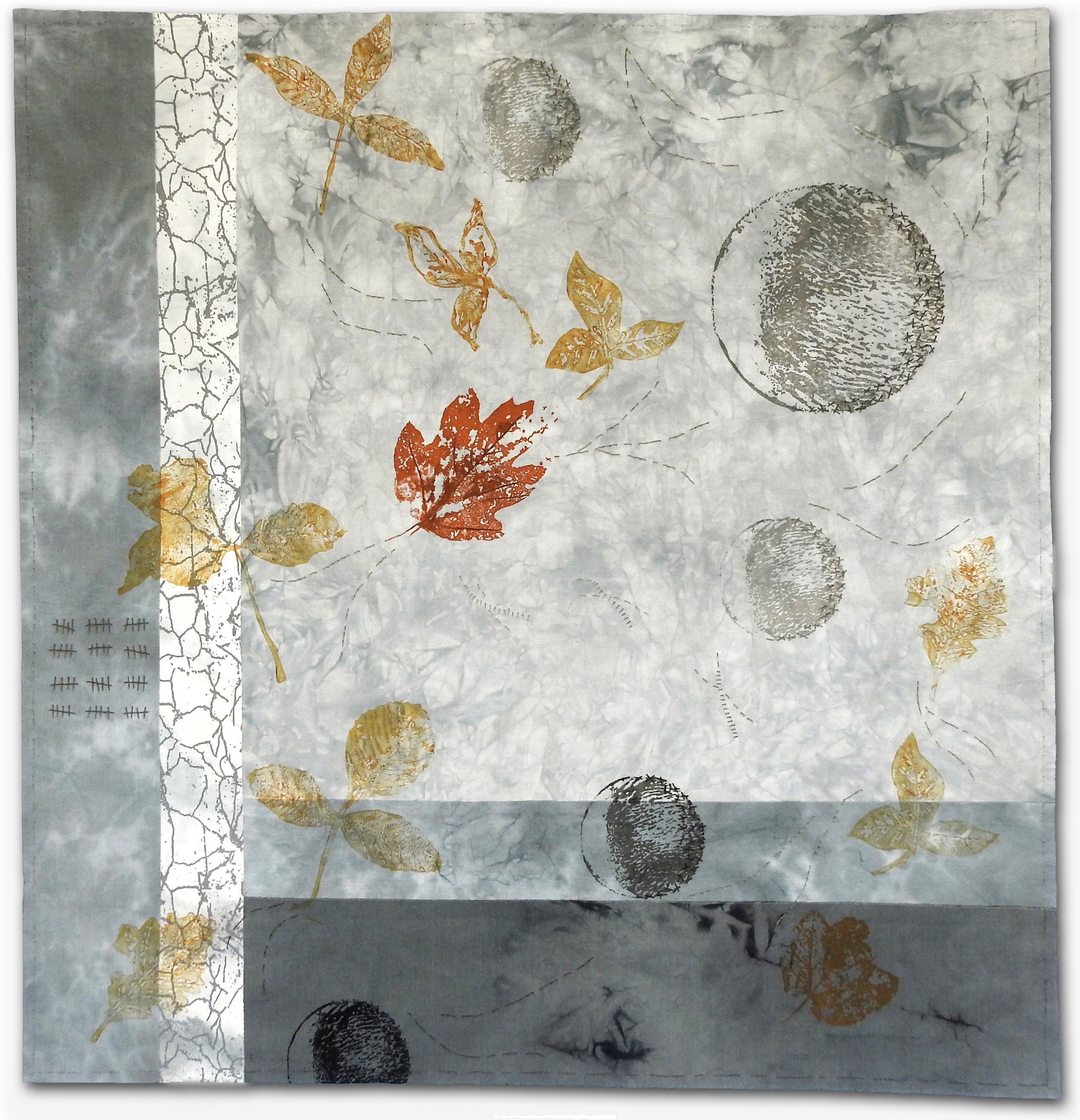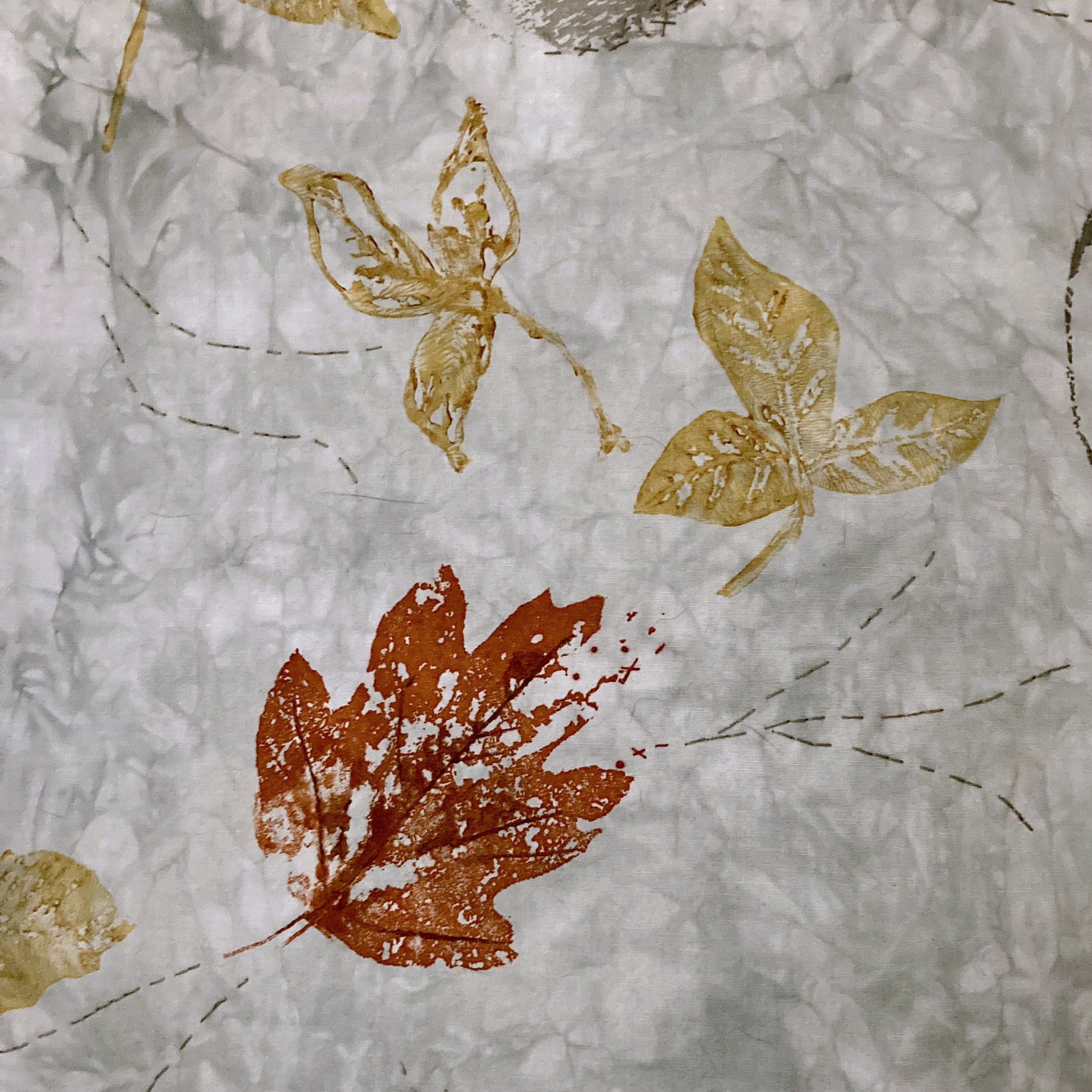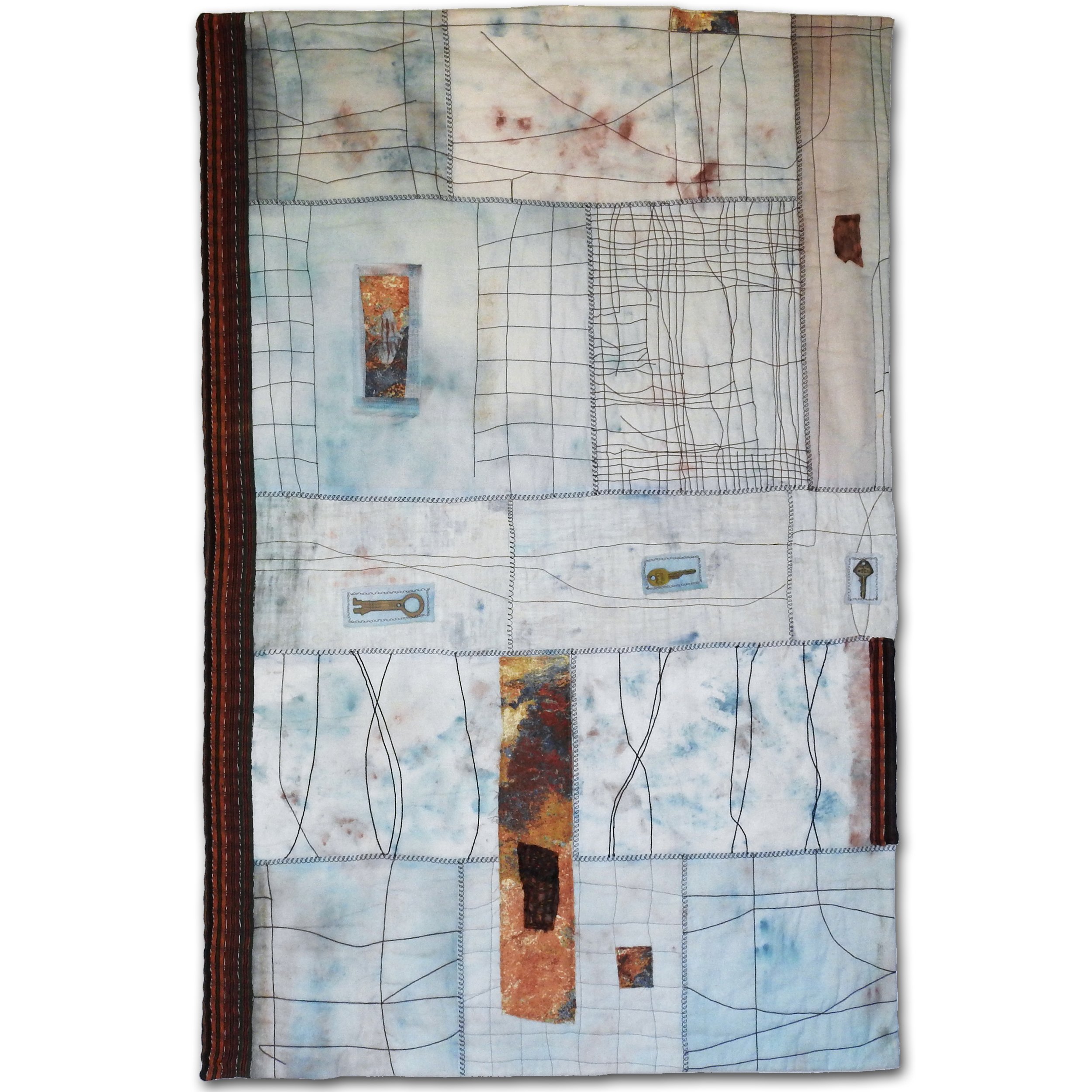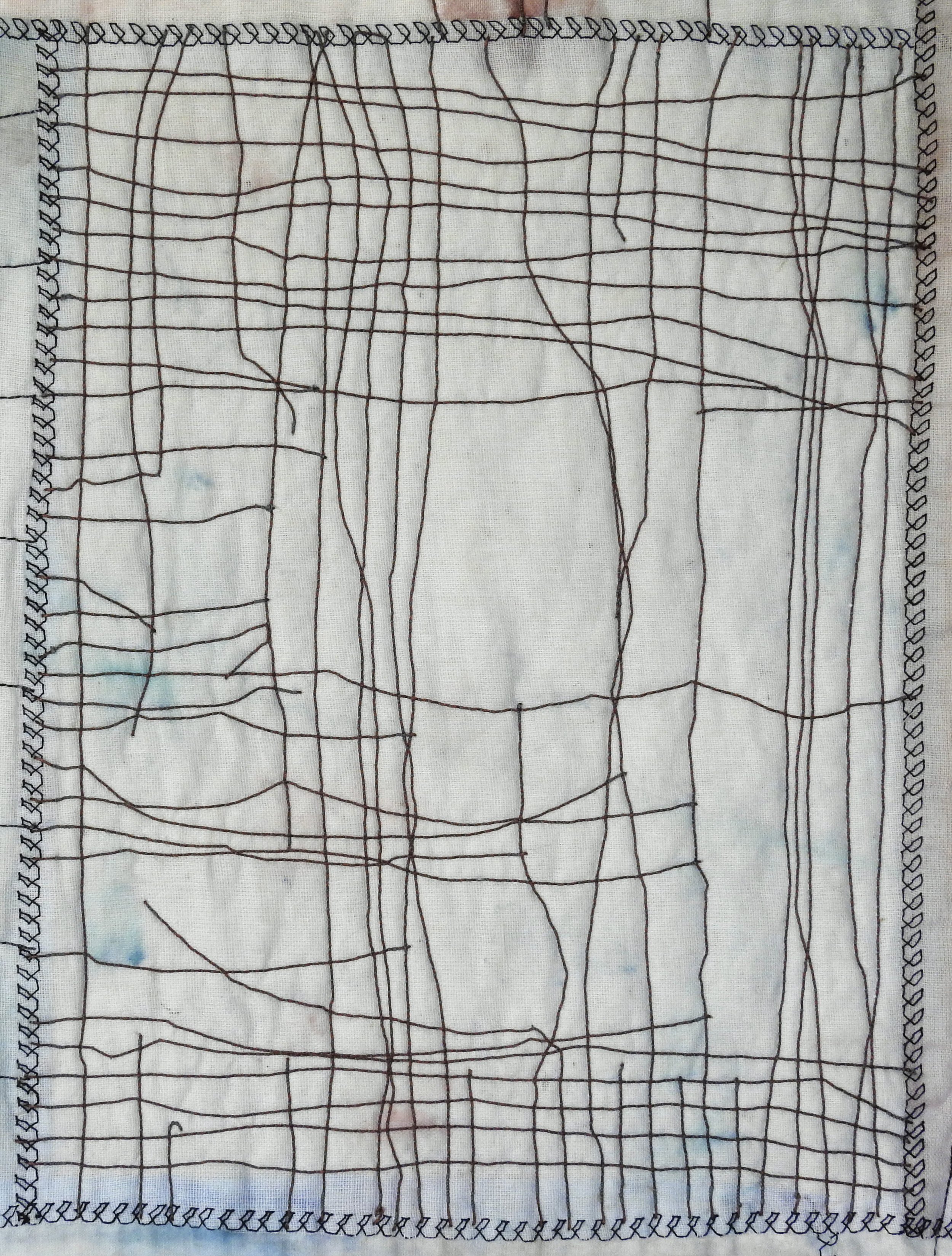The Power of Thread
A strand of thread seems so inconsequential and so fragile. But it actually has tremendous versatility. On an artwork, it can act as the element of line. If it is added in a series of stitches close together, it can create a shape, if it is densely stitched, it adds texture. The fiber can be used to add color, contrast, and to provide unity. But beyond the elements and principles of art, fiber has even more power.
In The Tale of Two Cities, Madame Defarge used yarn as a weapon as she stitched names of enemies into her knitting. Farther back in time, in ancient mythology, three sisters called Fate determined a person’s destiny with thread. One of them spun the thread, one of them measured its length, and the third sister cut the thread, which determined when the person was born, what happened to them in life, and when they died.
Although my art doesn’t have any supernatural power, I hope it has the ability to significantly engage viewers. In Navigating Change, I use a running stitch to create the effect of leaves blowing around to feed the story of changes coming in with the wind. The colors and shapes dominate this work, but without the thread designs, it wouldn’t have substance.
Sometimes, it’s the thread that not only structurally holds the fabric together, but it’s the thread that tells the story. In Screen Door With a View, I stitched lines to reproduce the design I saw on a screen door in Panama. The designs formed by threads on this artwork are definitely the main event. They even take precedence over color and shape. I’m not sure what people thought when they saw me photographing the screen door, but I knew it would find a place in my artwork someday. And it remains one of my favorites.




